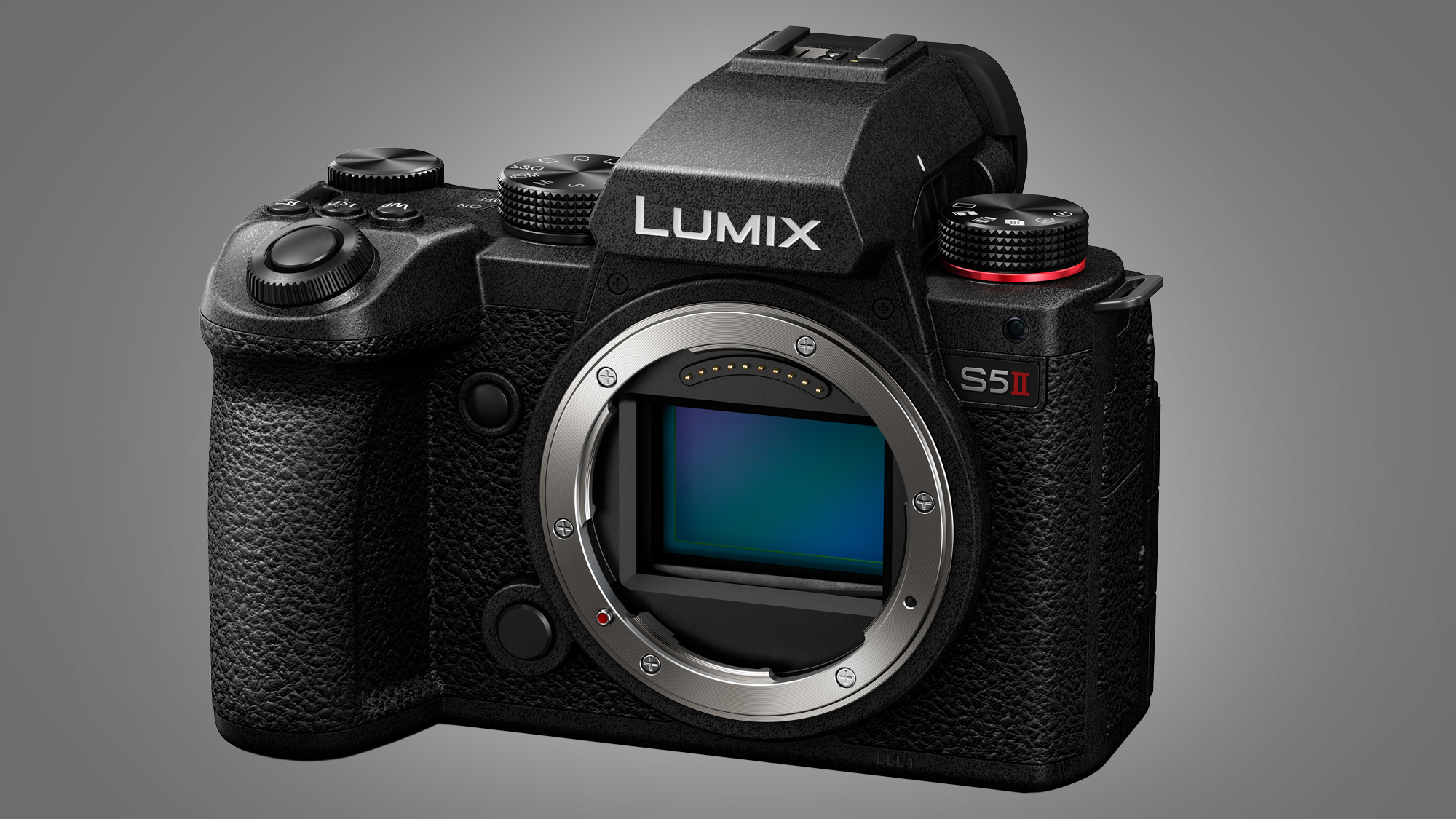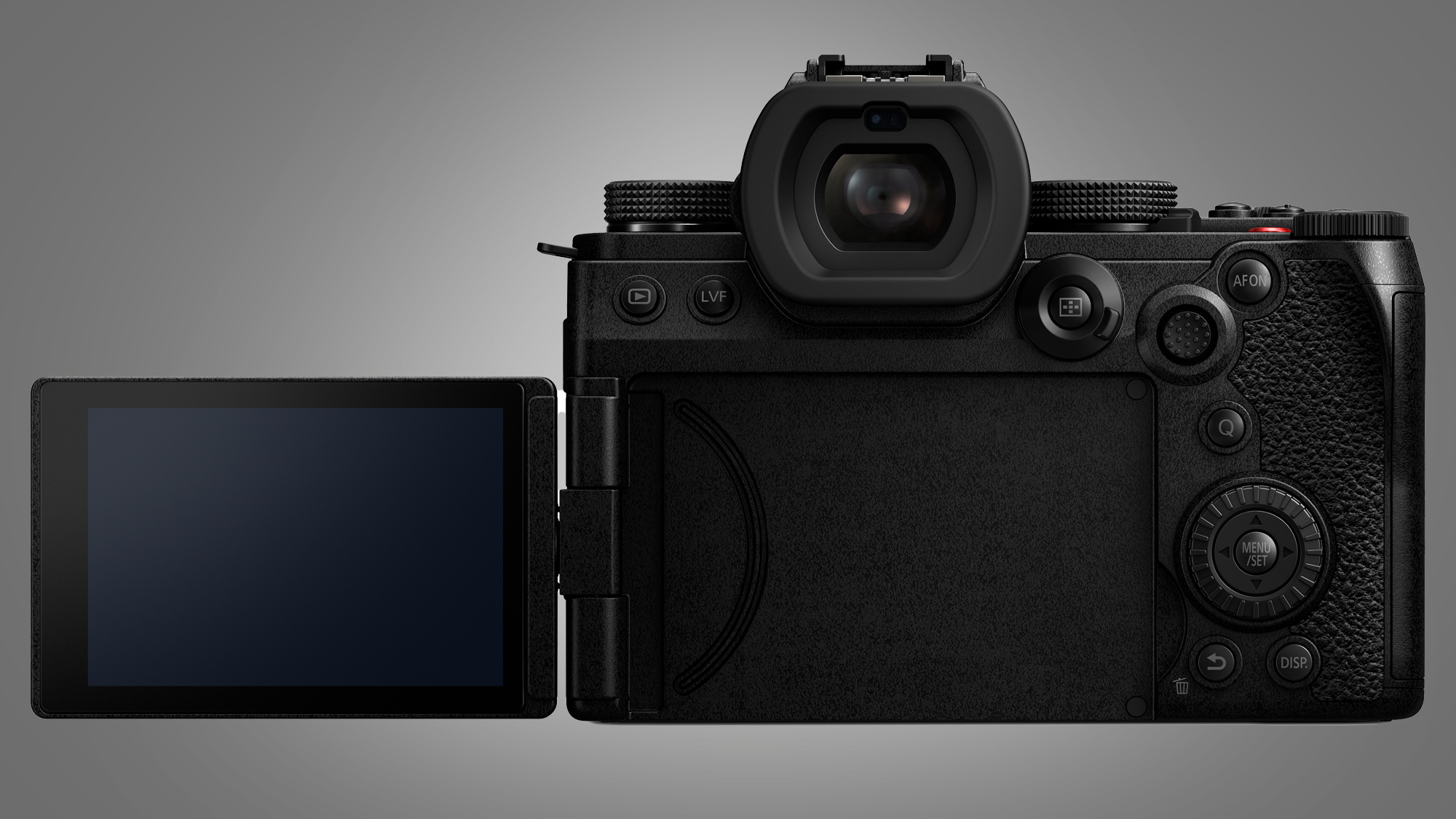Panasonic just fixed the biggest weakness of its Lumix mirrorless cameras
Panasonic has just grabbed the camera headlines at CES 2023 by announcing two full-frame cameras that deliver a much-needed new feature to its Lumix lineup – phase-detect autofocus.
The Panasonic Lumix S5II and Lumix S5IIX, which succeed the Panasonic Lumix S5, are shaping up to be great video workhorses thanks to their new 24MP full-frame CMOS sensors. For the first time on Lumix cameras, this sensor brings a hybrid phase-detect autofocus system, which should (in theory) be a significant jump from the contrast-based detection system seen in its earlier cameras.
So what’s the difference between the Lumix S5II and S5IIX? The S5IIX is a little pricier and will arrive later this year, but brings some more pro-friendly video features including internal ProRes recording, raw video output and the ability to record directly to an SSD drive over USB. But otherwise the two cameras are largely identical and should rank among the best video cameras you can buy.
Both the Lumix S5II and S5IIX are capable of shooting 6K/30p video (with 4:2:0 10-bit color depth). They can also record 4K/60p video using the full width of the sensor and serve up an APS-C mode for a narrower field of view. Thanks to the addition of a new fan, which is at the top of the camera below its logo, the cameras can also shoot video for unlimited periods in most frame-rates and resolutions.
But it’s that new on-sensor phase-detect autofocus (PDAF) system that’s the really big news. The lack of PDAF has been a longstanding criticism of Panasonic cameras, because it means their autofocus is more prone to hunting or ‘wobble’ than rivals that combine both phase-detect and contrast-detect AF.
The new AF system on the S5II and S5IIX should be particularly handy for video shooters and includes subject-recognition AF modes, which can recognize humans and animals, along with Face/Eye detection in the scene. The two new Lumix cameras also have improved in-body image stabilization (IBIS), which Panasonic claims is twice as good as the original S5.
While the Lumix S5 and S5IIX are predominantly designed for video, they also bring improvements for stills photography. Both can shoot at 9fps with the mechanical shutter, but manage an impressive 30fps when you switch to the electronic shutter (albeit with the potential downside of rolling shutter). There’s also a 96MP Pixel Shift mode for hi-res shots, though this can only really be used in static scenes.
Impressively, the Panasonic Lumix S5II has the same US launch price as its predecessor, which will remain on sale. You’ll be able to buy it later this month for $1,999 / £1,999 (around AU$3,520). The Panasonic Lumix S5IIX will arrive later this year (towards the end of May in the US, or ‘Winter 2023’ in the UK), costing $2,199 / £2,299 (around AU$4,045).
Analysis: A long-awaited moment for Lumix fans

The arrival of phase-detect autofocus (PDAF) on Panasonic cameras is a big deal – not just for Lumix fans, but anyone who’s looking to buy a hybrid mirrorless camera.
The company’s previous AF systems certainly haven’t been terrible and many shooters will simply use manual focus for static subjects. But in theory, the new system should bring the Lumix S5II and Lumix S5IIX closer to the high autofocus watermark set by Canon and Sony. If so, that could make Panasonic’s new launches very tempting considering they deliver video features not offered by those rivals.
The lack of phase-detect autofocus on the recent Panasonic Lumix GH6 was such a big deal that the company was apologetic about the omission. During a candid chat for the GH6 launch, Panasonic USA’s Business Development Manager Matt Frazer said he was “well aware it isn’t the direction that people were hoping that we would go” regarding the camera’s autofocus, but that “it just wasn’t possible for us to get a modification for phase-based autofocus” on the camera’s new sensor.

That’s now changed on the Lumix S5II and S5IIX, which have new 24MP full-frame sensors that deliver those crucial PDAF autofocus points. We’re yet to test out this system, but in theory it should deliver more confident autofocus in video and also for stills when shooting moving subjects with continuous autofocus. This is because phase-detect autofocus is typically faster than contrast-based AF for tracking moving subjects.
That said, it doesn’t necessarily mean that hybrid shooters should rule out the Panasonic Lumix GH6. While that camera has a smaller Micro Four Thirds sensor and more limited autofocus, its sensor does offer faster read-out speeds for avoiding rolling shutter issues shooting in 4k/60p and 4K/120p without a crop.
If you want a full-frame hybrid camera, though, then the Panasonic Lumix S5II and S5IIX are strong new rivals for the Canon EOS R6 Mark II and Sony A7 IV. They offer pro-friendly features like waveforms and open-gate recording (which uses the full height of the camera’s sensor so you can easily export in different aspect ratios), along with a more powerful in-body image stabilization that could make them ideal for run-and-gun shooting. We’ll bring you our full reviews very soon.
For all the latest Technology News Click Here
For the latest news and updates, follow us on Google News.
